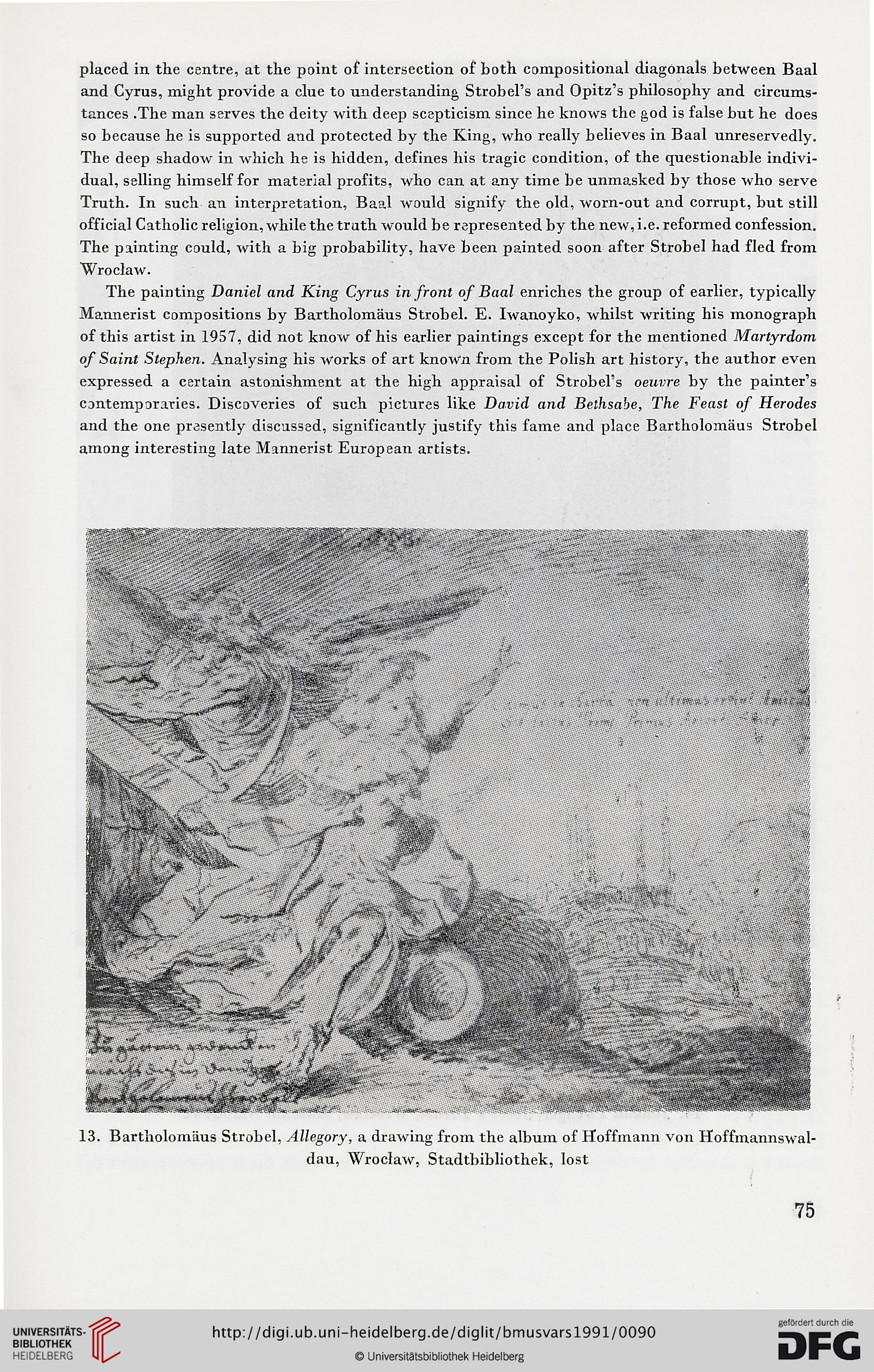placed in the centrę, at the point of intersection of both compositional diagonals between Baal
and Cyrus, might provide a clue to understanding StrobePs and Opitz's philosophy and eircums-
tances .Tbe man serves the deity with deep scepticism sińce he knows the god is false but he does
so because he is supported and protected by the King, who really believes in Baal unreservedly.
The deep shadow in which he is hidden, defines his tragic condition, of the ąuestionable indivi-
dual, selling himself for materiał profits, who can at any tirae be unmasked by those who serve
Truth. In such an interpretation, Baal would signify the old, worn-out and corrupt, but still
official Catholic religion, while the truth would be represented by the new,i.e. reformed confession.
The piinting could, with a big probability, have been painted soon after Strobel had fled from
Wrocław.
The painting Daniel and King Cyrus in front of Baal enriches the group of earlier, typically
Mannerist compositions by Bartholomaus Strobel. E. Iwanoyko, whilst writing his monograph
of this artist in 1957, did not know of his earlier paintings except for the mentioned Martyrdom
of Saint Stephen. Analysing his Works of art known from the Polish art history, the author even
expressed a certain astonishment at the high appraisal of Strobel's oeunre by the painter's
contemporaries. Discoveries of such pictures like Da.vid and Belhsabe, The Feast of Herodes
and the one presently discassed, significantly justify this fame and place Bartholomaus Strobel
among interesting late Mannerist European artists.
13. Bartholomaus Strobel, Allegory, a drawing from the album of Hoffmann von Hoffmannswal-
dau, Wrocław, Stadtbibliothek, lost
75
and Cyrus, might provide a clue to understanding StrobePs and Opitz's philosophy and eircums-
tances .Tbe man serves the deity with deep scepticism sińce he knows the god is false but he does
so because he is supported and protected by the King, who really believes in Baal unreservedly.
The deep shadow in which he is hidden, defines his tragic condition, of the ąuestionable indivi-
dual, selling himself for materiał profits, who can at any tirae be unmasked by those who serve
Truth. In such an interpretation, Baal would signify the old, worn-out and corrupt, but still
official Catholic religion, while the truth would be represented by the new,i.e. reformed confession.
The piinting could, with a big probability, have been painted soon after Strobel had fled from
Wrocław.
The painting Daniel and King Cyrus in front of Baal enriches the group of earlier, typically
Mannerist compositions by Bartholomaus Strobel. E. Iwanoyko, whilst writing his monograph
of this artist in 1957, did not know of his earlier paintings except for the mentioned Martyrdom
of Saint Stephen. Analysing his Works of art known from the Polish art history, the author even
expressed a certain astonishment at the high appraisal of Strobel's oeunre by the painter's
contemporaries. Discoveries of such pictures like Da.vid and Belhsabe, The Feast of Herodes
and the one presently discassed, significantly justify this fame and place Bartholomaus Strobel
among interesting late Mannerist European artists.
13. Bartholomaus Strobel, Allegory, a drawing from the album of Hoffmann von Hoffmannswal-
dau, Wrocław, Stadtbibliothek, lost
75




